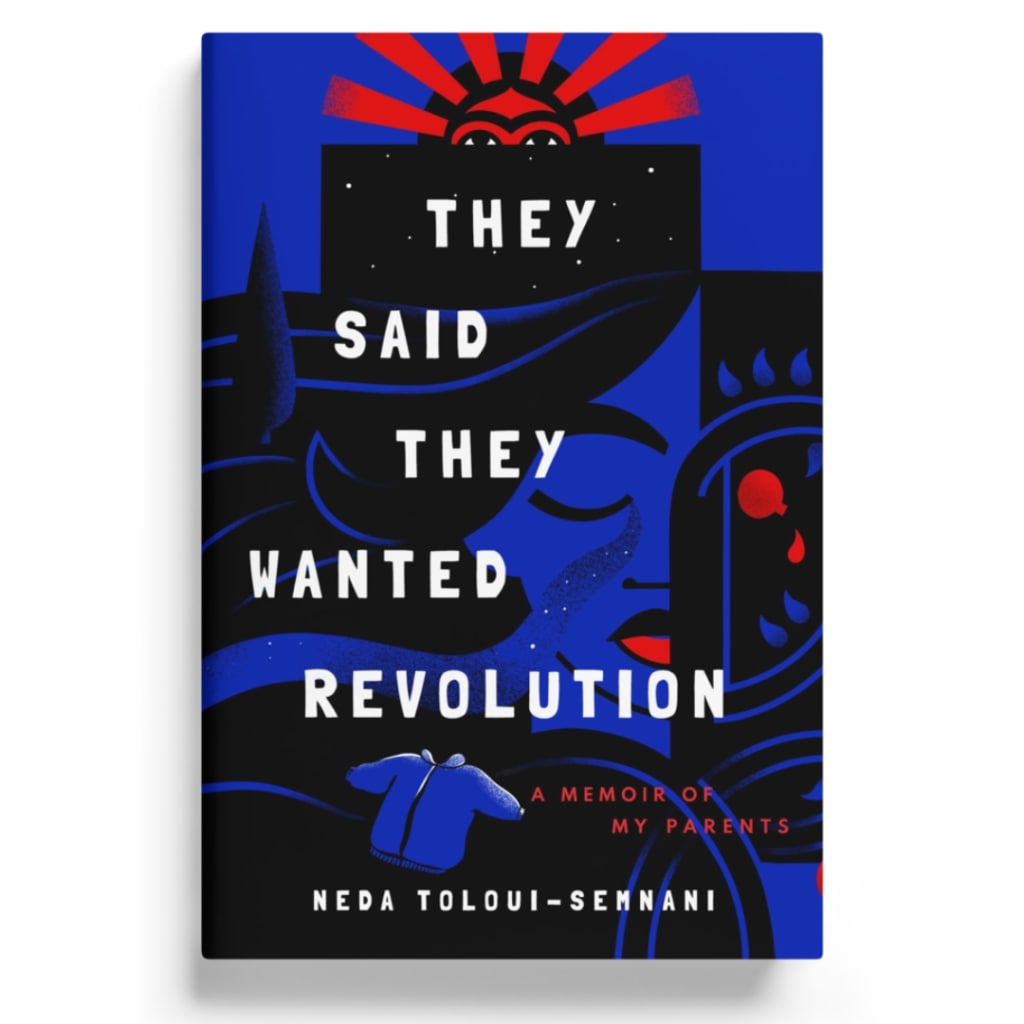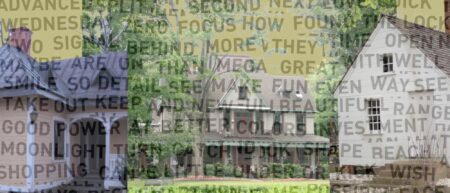Towards the end of They Said They Wanted Revolution: A Memoir of My Parents, Neda Toloui-Semnani admits she doesn’t know when she first learned of her father’s death: “My brother and I always knew he was killed—though the particulars of how were filled in over time. Even so I don’t remember anyone dwelling on the mechanics of his murder: shot down by firing squad. And I don’t remember who finally told me that was how it happened.” In her book, Neda doesn’t dwell on the mechanics of her father’s death, yet it determines her whole life and the story she tells. Her father had been accused—and would eventually be found guilty—of being associated with the 1982 Amol uprising against the Islamist Iranian government in the aftermath of the Iranian Revolution. Neda’s father admitted to being affiliated with the Union of Iranian Communists, but he denied having participated in the uprising. After his arrest, Neda’s mother realized she had to get back to the United States, where she was born and her family lived. The book is an attempt to understand her parents’ choices and to understand what it means to be a child of such an early, traumatic experience.
If her father’s death and the events that led to it are the black hole that has pulled at Neda her whole life, then her attempt to understand it is like a journey towards the event horizon. Time stretches and folds back on itself. She moves between her reporting—like visiting her father’s college, interviewing his ex-girlfriend over lunch, and seeing mountains she’d crossed as a three-year-old with her pregnant mother, aunts, baby cousin, and uncle—and historical narratives both before and after she was born. She doesn’t follow a linear narrative because, as she explained to me, we don’t remember traumatic experiences as linear.
Her father’s death isn’t really a black hole, though. Even at points when her research, reporting, and writing pulled her into depressions that were difficult to pull herself from, she used her journalistic training to understand the nature of trauma and writing about traumatic experiences.
I wanted to understand how she used her background and current work as a journalist to dig into the extremely personal—and how she moved away from conventions of narrative journalism and memoir to create this nonlinear exploration of her family’s history.
Neda and I sat down over Zoom to talk about her book. What follows is an edited and condensed version of our conversation.
Kristina Gaddy: You interviewed a lot of people multiple times over the course of six years. When did you start interviewing people seriously the first time?
Neda Toloui-Semnani: I guess it was late 2013, and I started doing reporting trips in early 2014. When I started asking questions, I didn’t really know what I was doing. I sort of knew what the story was. I had been told a certain number of stories about my parents, and their lives, and my family growing up. So that’s where I started from. In 2013 and 2014, I was trying to get the contours of the story. Do I understand the politics? Do I understand where people were? I’m a journalist [and] I was trying to get my head around how to write a book, what a memoir was.
KG: When you go to interview your uncle in 2018, you tell him, “You’re asking why I’m interviewing you, since I’ve already interviewed you. It’s because it’s been a few years. My understanding and my relationship with this story are different” (156). What changed or why did you feel that it was necessary to return and re-interview people? Did your technique change? Was it more than asking follow-up questions?
NTS: Almost four years later, when I started doing the next serious round of reporting, after I had a book contract, I was a little bit older. I had a different relationship with the topics in the book, with the people in the book.
A memoir is such a snapshot of who you are at a specific time. I started the book when I was 33, and I was really mourning my mom at that point. I talk about it in the book, but I hadn’t given myself the space to mourn her. The process of writing the book and not taking care of myself had also put me into a chronic depression that I didn’t treat for a while. Once I got better, my writing changed, my relationship to the story changed. And I needed to go back and revisit some people.
[At that point] I knew what scenes I wanted to write, which scenes were missing, which details I wanted to linger over. I felt I had a command of the material enough where I could lead the conversation differently. It wasn’t just a sit-down free-for-all. There was a level of confidence (which might have been a deadline-driven confidence) that I had the second time.
My reporting technique also changed. I call it trauma-informed reporting now—that’s a term I made up—but [I developed a method for] being able to talk to people who have gone through difficult things. With my uncle [the first time], we stopped right before he came to Turkey [to get me and my mom back to the US]. I knew I wanted to do a tick-tock [a detailed chronology of events], and we can have that conversation as niece and uncle, but that’s a different conversation than when you are doing a deep-dive interview. I didn’t want to drag that out of him and put myself in that position without being sure this book would become something.
KG: You also write that you and your best friend Elana “came up with a script that was supposed to remind both the interviewer (me) and the interviewee (them) that they should think of me as a professional” (156). Can you tell me more about that script?
NTS: It’s a version of what you would say to any source, but acknowledging that we are family, allowing them to go off the record. I would tell them, “You are leading this conversation. Let me know when you want to pause, when you need a break.” And I think that’s really important for longer, immersive interviews. You are going deep into something that could hurt somebody or retraumatize them. There are things that I look out for (and I’m better at it now than I was even in 2018).
I remind them that this is on their terms, which is much easier when you are not personally invested with that person. [First], this reminds them that this is a job, which is uncomfortable. Also, I’m Iranian, and this isn’t meant to sound disrespectful, but there is a culture of respecting your elders. And I wonder if they thought, “You don’t have to give me permission to tell my story—I tell you I’m in control of the story and on and off the record.”
KG: Trauma-informed reporting sounds like a really formal term—is this something you looked up? Or is it something you tried to figure out, how do I do this without traumatizing myself, without retraumatizing my interviewees?
NTS: I had a chapter of my [MFA] thesis published in 2015 in the Baffler. And during the editing process, I was pretty devastated by the end of it. It taught me a lot about how I wasn’t careful with myself, and that broke me. It sounds dramatic to say, but I literally retreated to my bed and couldn’t do a lot of things. I had to go and research how post-traumatic stress disorder (PTSD) manifests, what the signs are. I did workbooks, I read books on it, I talked to professionals, I talked to my friends, and tried to figure out what was happening. Once the acute stage of taking to my bed and not being able to communicate and speak to people [passed], I spent a long time trying to figure out what was wrong with me.
One of the things that I’ve learned to be really careful about is simply limiting how long an interview goes. [Even with longer interviews], I kept checking in with myself—with my breathing, with my heart rate, and whether or not I’m sweating, to make sure I was OK. And looking at the same things for [the interviewee]. What I realized is that in these types of interviews–to get the types of details I wanted, to make this book feel textured and tangible, and do justice to these stories–I was asking people to go into a place where they were really vulnerable. And I could only ask them to do that if I was doing my best to make sure we were both safe.
In my day-to-day job [at Vice News], I’m working with people who do really fast turnaround stories coming out of war zones, and I’ve done months-long investigative stories with people who are really vulnerable, and if you aren’t careful, you can hurt a lot of people.

KG: In your recent interview with Assay, the interviewer brings up that certain passages “feel really essayistic” to her. I might argue your book isn’t a memoir, and I think that’s because we have certain expectations with memoir, and one of them is a sustained narrative. You don’t really have that. You almost have three big essays, with each part of the book an essay unto itself and yet they combine to make something bigger. I was also reading a craft essay in Brevity on the fragmented memoir, where Sonja Livingston writes about Meg Tilly’s memoir, and how it “hooked me, in part, because it underscored what I’d begun to suspect about trauma and narrative form….Tilly’s memoir further convinces me that the episodic form is a natural outgrowth of emotional and literal splintering of some early lives.”
I don’t know if you were conscious early on that you couldn’t just tell this as a straight narrative—it’s not a beginning, middle, end story. Were you actively thinking about the trauma of everyone’s experiences or was it a natural outgrowth?
NTS: I was thinking about it very consciously. Going back to what we mean when we talk about trauma, a reality of traumatic memory is that it doesn’t work in a linear narrative. That’s not how people tell stories about pain or moments that have scared them. When you talk to someone who has been really hurt or traumatized, you find they tell the story haltingly. They’ll say an image that stuck out to them, they’ll start and circle back on themselves. The timeline doesn’t work the same. We also do a lot of body memory. A time of year can trigger something.
The way we tell our trauma stories, especially children, is you tell through picture, through senses. As I was working on this, I did a lot of research on child development and child development in children with trauma. I was trying to figure out why I remembered certain things, like the texture of my jacket, and not other things.
I tried to figure out why I could only tell the story in a certain way, because I’m also an editor and I believe in centering the reader. So how do I make this book that comes from a place of grief and pain, that clinically comes from a trauma place, how do I tell that in a way that doesn’t feel off-putting to other people? And is [also] honest in that fragmented way we tell our traumatic stories.
For the most part, news stories are traumatic. But the thing that journalists do is we go in and say, “Tell us your story. Tell it to us quickly and simply,” and then we are going to straighten it into this narrative that makes sense. That is our job, day-in and day-out. But what is disingenuous about that, is that’s not true to the lived experience.
The structure of this [book] was really hard to come to and then make peace with. You have the beginning, which is set over ten years of action, but twenty years of [my parents] lives. Then there is a section when I am in the picture, where the expectation of a historical narrative is that we are in Iran during the revolution and we are going to sink into the revolution. But, actually, I’m a child at that point and my world isn’t the revolution. It’s not even the uprising. It’s my parents and this breaking of my family structure. In a practical craft sense, it’s more immersive, the sentences are shorter. And once I try to verbalize things, it becomes fragmented, and that’s the third part. I’m not sure this worked for everyone, but I stand by the structure. It’s true to the story.
KG: As writers we have specific reasons for doing things. We hope our readers see why. The first time I read a draft of your manuscript, I wasn’t sure about the epistolary section at the end and thought maybe that could be woven throughout the narrative. As you’re telling us the earlier part of the story, we don’t know you’ve spent all this time in Iran. First, I thought we should know more about you searching for your father early on. Reading it this time, I saw that it worked without being woven in.
NTS: I don’t know if it’s important that everyone know why I wrote it this way. I remember now how much work I put into it and why I came to that. Why I worked so hard to get it there. I feel like we don’t do enough justice to how children process their lives and the world around [them]. I guess there’s a world where I could have spelled it out, but I don’t know if that’s important.
Some reviews that people have written hurt. [In] one review, everything that I spent years thinking about and researching and putting together, this person didn’t understand. There’s part of me that wonders if everyone misunderstands this. But then there is the part of me that feels brave to have done it. This is my book and I’ve decided to honor who I am as an author.
KG: In reading Matthew Salesses’s Craft in the Real World, I’ve realized how important it is when critiquing writing that we understand what the writer’s intentions are. We do all of this work, and it’s not solitary. We choose to write in a certain way and seek feedback, but there’s no guarantee that people are going to like it or understand it.
NTS: I think when people critique writing, they center how they feel about it.
In order to do a memoir justice, you have to dig so deep and excavate yourself, your family, whatever the story is in order to communicate something that is personal and universal. You have to be able to look at yourself really honestly, and that’s a really hard thing to do.
KG: Was there something that was the most challenging about research and reporting? Or was there something that you didn’t actually want to know the answer to?
NTS: I was really nervous about finding stuff about my parents and family that I couldn’t unknow. Then I would be obliged to consider sharing it with other people.
There’s a very short section that was really, really hard to write, to report, and then frankly, I had to check myself on it. I was told my dad was part of a group that had interrogated someone. I had heard the story from a few different people, including one person that was in the room. He said it one way, and then these other people had heard it second hand, and said it [happened] another way. One version of it was really harsh, was really hard to hear. I had to sit with it for a while.
I had essentially written the harshest version of the story, and when my family read it, they were like, “This doesn’t make sense. This is not your father’s character.” My first reaction was that they didn’t want it to be true. But then more people started saying that, and so I went back and re-read my interviews.
I realized I was so nervous about writing my dad as a hero or a martyr or someone who was perfect, when that was so not what I wanted to do. And I didn’t want anyone to say I was too easy on him. So I had defaulted to this worst version of him. When I went back and looked at [the scene] like I would any other [or] anyone else I would have reported on, I would have picked the details that I could have two sources on. And when I did that, that version stood. It was more journalistically sound, and it was something I could live with. I had to make my peace with the most horrible version, and it was painful.
I learned a lot of really hard things about people. What I was scared of was that I was going to love them less, or it was going to change how I felt about them, and that wasn’t the case. I ended up appreciating my parents and my extended family.
KG: Do you think writing the book made your family more open and more willing to talk about these things that they had avoided because they were all collectively scared of rehashing the past?
NTS: I think I’m lucky that my family—most of my family—are talkers. They like to be in control of the story. What really helped was them reading the manuscript and loving it, for the most part. It made us all closer at the end of the day. That was not a truth I was sure I was going to get to.
We talk about the past in a different way now. My sense is that it doesn’t feel as charged. There’s a sadness, there’s so many layers there, and it feels like people have made peace with it. I don’t know if that is because time has passed, others passed away, life has moved on. Or whether it’s because we’ve all had to face it.
What I am really excited about is that a lot of the people that I spoke to for the book and friends of my parents have reached out to me and said, “Thank you for writing this book, it’s given me closure” [and] sharing really beautiful letters of how important the book is to them. As careful as I tried to be, as honest as I tried to be in this book, that felt really good.
—
Neda Toloui-Semnani is a senior writer with the television news magazine, VICE News Tonight, her work has appeared in numerous publications, including The Washington Post, Kinfolk, New York, LA Review of Books, The Baffler, The Week, BuzzFeed, and Roll Call among others. She’s been featured in The Rumpus and This American Life. She holds a masters of science in gender and social policy from the London School of Economics and Political Science and a masters in fine arts in nonfiction from Goucher College. She was named a 2018 fellow with the Logan Nonfiction Program and a 2017 NYSCA/NYFA fellow in Nonfiction.
She grew up in Washington, D.C., and is based in Brooklyn where she lives with a small dog, a large cat, a chubby baby, and a man she calls Stretch.
Kristina Gaddy is the author of Flowers in the Gutter: The True Story of the Edelweiss Pirates, Teenagers Who Resisted the Nazis (Dutton YR 2020) and the forthcoming Well of Souls: Uncovering the Banjo’s Hidden History (Norton Fall 2022). Her essay “Intersectional Landscapes” appears in A Harp in the Stars: An Anthology of Lyric Essays (Nebraska 2021). She has an MFA in nonfiction from Goucher College.



